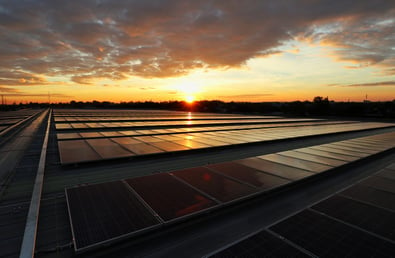Solar: A beacon of light for your utility bill
What is Solar Energy?
EnergySage, the leading online resource, and solar marketplace, backed by the U.S. Department of Energy, define solar power as “usable energy generated from the sun in the form of electric or thermal energy. Solar energy is captured in a variety of ways, the most common of which is with photovoltaic solar panels that convert the sun’s rays into usable electricity.” Energy alternatives, such as solar power, and energy efficiency has been top of mind for many home and building owners for years. Does the value outweigh the cost?
Cost
Solar panel costs have been decreasing as it is becoming more common. Over the past 5 years, solar has gone down in price by about 20%. Usually, equipment and labor costs are included in the overall cost of solar panel installation. Federal solar tax credits can be issued as well, which ends up decreasing the cost of solar integration by about 26%. The average price per watt of solar energy can be anywhere roughly from $2.50-$3.30 and can vary from state to state. According to EnergySage, “Solar panel costs for an average-sized installation in the U.S. usually range from $11,144 to $14,696.“
Value
Monthly utility bills for businesses can fluctuate, but integrating solar energy into a business’s utilities could reduce the amount of those bills. Most operating solar energy options will provide a company with fairly predictable energy costs based on their solar energy setup. An added value for businesses is the visibly-demonstrated commitment to sustainability and more energy-efficient operations. It is more important now than ever before to show a dedication to long-term energy sustainability and commitment to reducing a business’s negative impact on the environment.
There can be more to solar power than just basic transmittance to usable energy as an electricity alternative. EnergySage says, “Residential and commercial property owners can install solar hot water systems and design their buildings with passive solar heating in mind to fully take advantage of the sun’s energy with solar technology.”
The value in different areas of the country can vary state to state, based on the typical amount of sunshine the region gets. In the Pacific Northwest, when the clouds can sometimes be too dense for sunlight to shine through, solar energy output can be limited. In typically sunnier states like California, solar power is their Number 1 renewable energy source. Data from 2019 from the California Energy Commission showed that non-carbon sources, including solar, was responsible for over two thirds of the states electricity.
Have you switched to solar power for your home or business? Let us know here, and tell us your thoughts!
November 16th, 2020 | construction management
Related Posts
SIGN UP FOR OUR NEWSLETTER
Recent Posts
Categories
Archives
Archives
- January 2024 (1)
- July 2023 (1)
- January 2023 (1)
- September 2022 (1)
- March 2022 (3)
- February 2022 (3)
- January 2022 (2)
- December 2021 (4)
- November 2021 (2)
- October 2021 (2)
- September 2021 (2)
- August 2021 (2)
- July 2021 (3)
- June 2021 (2)
- May 2021 (2)
- April 2021 (2)
- March 2021 (5)
- February 2021 (4)
- January 2021 (1)
- December 2020 (1)
- November 2020 (3)
- October 2020 (2)
- September 2020 (2)
- August 2020 (2)
- June 2020 (1)
- May 2020 (2)
- April 2020 (1)
- March 2020 (2)
- February 2020 (1)





